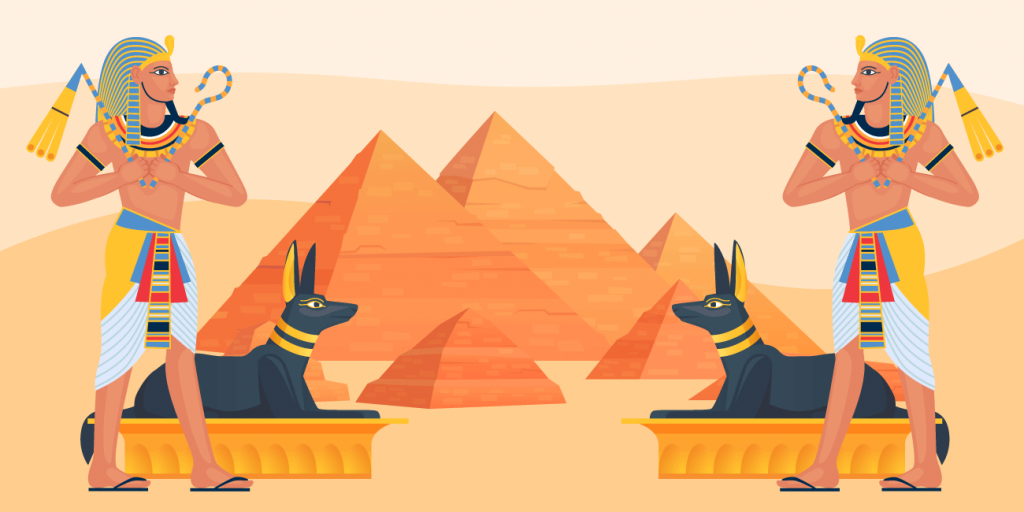Unlocking the Mysteries of King Tut and Ancient Egypt

Date: October 31, 2023.
Shrouded in mystery and rich history, Ancient Egypt, the story of King Tutankhamun, or King Tut for short, and the incredible discoveries in the realm of Egyptology are a fascinating journey back in time to this ancient civilization. King Tut’s story has captured the world’s imagination and significantly advanced our understanding of this time in history. His image, especially the legendary golden mask, has become an iconic symbol of ancient Egypt.
The Pharaohs: Ancient Egypt’s Reigning Rulers
Thriving along the Nile River in northeastern Africa for over three millennia, Ancient Egypt was ruled by a series of pharaohs, often organized into dynasties. The pharaoh was both a political and religious leader, considered divine and also responsible for maintaining “Ma’at”, the cosmic balance.
Did you know the Great Pyramid of Giza and others like it served as royal tombs for pharaohs? The monumental architecture of these tombs were constructed to provide a final resting place for the deceased rulers and to ensure their safe passage into the afterlife, a central belief in ancient Egyptian religion. The tombs were filled with a wide range of items, including food, trinkets, tools, jewels, and other various possessions which the deceased would need to continue their existence after death. Serving as symbols of the pharaoh’s power and divinity, the tombs also contained intricate burial chambers and passageways designed to facilitate the pharaohs’ journey to the afterlife.
Classroom Activity Idea: Take your students on a journey through time with a virtual tour of Ancient Egypt on the PBS NOVA website. Afterwards, create a timeline on your classroom wall, spanning the early dynasties to the New Kingdom, and have students add key events, figures, and developments in ancient Egypt, including King Tut’s reign. Then, discuss how the discovery of King Tut’s tomb, along with other burials, transformed the field of Egyptology and archaeological practices.
Tut’s Reign
Tutankhamun, originally named Tutankhaten, but later changed it to reflect a return to the old gods and religious traditions, was one of the youngest rulers in ancient Egyptian history. Often referred to as the “Boy King”, he ascended to the throne at the early age of nine and only ruled for 10 years during the 18th dynasty of ancient Egypt around 1332-1323 BC.
His rise to the throne is believed to have been the result of political and familial factors, as his father, Akhenaten, had introduced a monotheistic religion centered on the worship of the sun god Aten, which was not well-received by the traditional religious establishment.
King Tut is believed to have initiated various building projects such as temples and shrines during his reign, but these were relatively modest compared to the grand monuments constructed by other pharaohs. Due to the brevity of his reign and his relatively minor role in Egyptian history, King Tut was not widely known until the discovery of his tomb.
Classroom Activity idea: Create a fun and interactive lesson by assigning your students’ roles as different members of ancient Egyptian society. Have them act out scenarios to understand the social structure and daily life of the time. Here you can find a breakdown of the complex social structure of the Egyptian hierarchy, from the pharaohs and nobles to the scribes and craftsmen.
A Mysterious Death
Shrouded in mystery, King Tut’s early death around the age of 18 or 19 remains one of the enduring mysteries of ancient Egyptian history and remains a subject of debate among scholars. Some theories suggest he died of an infection or injury, while others propose that political intrigue or power struggles might have led to his assassination. There’s also been theories about his death based off evidence of bone abnormalities and the presence of broken bones in his mummy, but those could be disputed as occurring postmortem rather than during his life or incurred at time of death.
The Discovery
Contrary to popular belief, King Tut’s reign was relatively unremarkable until the momentous discovery of his nearly intact tomb in the Valley of the Kings by British archaeologist Howard Carter in 1922. Inside the 3,000-year-old tomb was an astonishing treasure trove of artifacts and funerary goods, completely untouched—the tomb hadn’t been looted and destroyed as many others had!
The discovery of King Tut’s tomb was a pivotal moment in Egyptology, sparking a wave of Egyptomania and renewed interest in ancient Egyptian history and archaeology. One of the most iconic artifacts in the world actually comes from King Tut’s tomb, a golden funerary mask—it was placed over his mummy to protect and guide him in the afterlife. The mask is a beautifully constructed masterpiece of ancient Egyptian artistry, made of solid gold and adorned with precious gemstones and intricate detailing.
And that’s not all, the tomb contained over 5,000 artifacts, including jewelry, furniture, clothing, and even food. These items provided insights into the daily life and afterlife beliefs of the ancient Egyptians. The tomb contained not only treasures, but also a wealth of information about the funerary practices, religious beliefs, and artistry of ancient Egypt.
You can watch the full National Geographic episode following Egyptologists as they unearth discoveries in Egypt’s Valley of the Kings.
Classroom Activity idea: The Metropolitan Museum of Art has a complete resource guide for educators The Art of Ancient Egypt. On page 139, you’ll find plenty of classroom activities and discussion ideas to learn more about this fascinating culture and its artifacts.
Curse of the Pharaohs: Fact or Fiction?
The “Curse of the Pharaohs” is a legendary, and often sensationalized, belief that a curse would befall anyone who disturbed the tombs of ancient Egyptian pharaohs. The legend was popularized by the media after the discovery and opening of King Tutankhamun’s tomb. Several people involved in the tomb’s discovery and excavation faced mysterious deaths or misfortune fueling the superstition.
King Tutankhamun’s legacy has helped Egypt grow into a world-renowned destination, with millions of visitors coming to see his tomb—along with other ancient Egyptian wonders like the pyramids, temples, and the Sphinx. Visiting these awe-inspiring spectacles offer insights into ancient civilizations, their social structures, and geographical significance.
Interested in taking a journey with your students to experience this ancient civilization firsthand? Take a trip back in time with them on our Best of Egypt Student Tour. Cruise along the famous Nile River, stand in the shadows of the great Sphinx and wondrous Pyramids at Giza, and no trip is complete of course without a visit to the ancient Egyptian tombs.
Plus, learn about other iconic ancient civilizations. Experience and immerse yourself in the rich history of ancient Rome and Greece with the Italy & Greece and Athens & the Aegean Student Tours. Discover the ancient wonders of China’s Ming Dynasty on the Beijing, Hangzhou & Shanghai Student Tour. And, explore the Lost City of the Incas to learn about Peru’s Inca Empire on the Peru Incan Adventure Student Tour. Discover all this and more with our one-of-a-kind travel programs.


